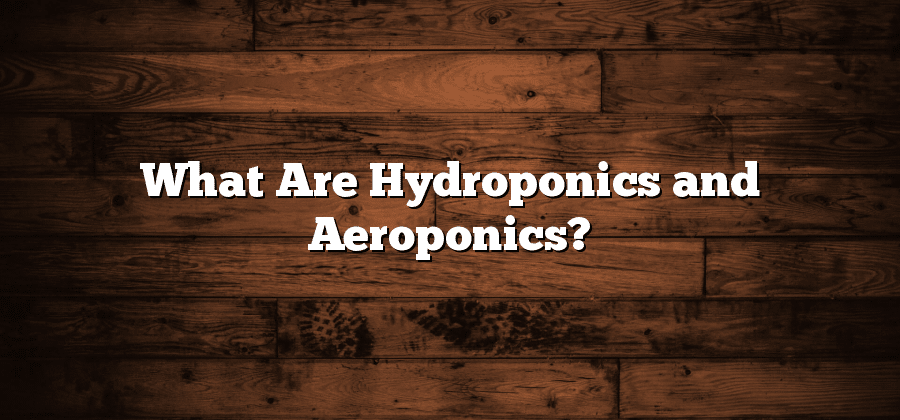Advantages of Soilless Cultivation Techniques
Soilless cultivation techniques, such as hydroponics and aeroponics, offer a multitude of advantages over traditional soil-based cultivation methods. One major benefit is precision in nutrient delivery. In soil-based farming, nutrients are dispersed throughout the soil, often resulting in uneven distribution and inefficient absorption by the plants. With soilless techniques, nutrients can be precisely measured and delivered directly to the roots, ensuring optimal nutrient uptake and plant growth. This not only promotes healthier and faster-growing plants but also allows for higher crop yields. Additionally, the controlled environment of soilless cultivation allows for the manipulation of various growing factors such as temperature, humidity, and lighting. By customizing these elements, growers can create optimal conditions for plant growth, resulting in faster growth cycles, enhanced yields, and better quality produce.
Another advantage of soilless cultivation techniques is water efficiency. Compared to traditional soil-based farming, hydroponics and aeroponics require significantly less water. In fact, these methods can use up to 90% less water than conventional agriculture. This is because the water used in soilless systems is recirculated and reused, minimizing wastage. Additionally, water consumption is reduced as the plants in soilless systems only take up the exact amount of water they need, eliminating excess runoff. This not only saves resources but also helps mitigate the environmental impact associated with water usage in agriculture. With increasing concerns over water scarcity, the water efficiency of soilless cultivation techniques makes them a more sustainable choice for food production.
Hydroponics: A Modern Cultivation Method
One of the most efficient and effective cultivation methods gaining popularity in recent years is hydroponics. This modern technique allows plants to grow without soil by providing them with nutrient-rich water directly to their root systems. By eliminating the need for soil, hydroponics maximizes the uptake of nutrients, resulting in faster growth and higher yields.
One of the key advantages of hydroponics is its ability to control the growing environment. With this method, growers have full control over factors such as temperature, light, humidity, and nutrient levels. By fine-tuning these conditions, plants can thrive in optimal conditions, leading to healthier and more productive crops. Moreover, hydroponics reduces the risk of soil-borne diseases and pests, as the absence of soil eliminates their breeding grounds and makes the plants less vulnerable to infestations. This not only improves the overall plant health but also minimizes the need for harmful pesticides and chemical treatments.
These advantages make hydroponics an attractive option for cultivating plants in various settings, including urban areas with limited space, regions with poor soil quality, and areas affected by drought or harsh climates. Additionally, the controlled environment of hydroponics allows for year-round cultivation, offering a consistent supply of fresh produce regardless of seasonal constraints. As this modern cultivation method continues to evolve and develop, its potential for sustainable and efficient crop production becomes increasingly significant.
Aeroponics: A Revolutionary Plant Growing Technique
Aeroponics is a cutting-edge plant growing technique that has revolutionized the field of agriculture. Unlike traditional farming methods that rely on soil, aeroponics eliminates the need for soil altogether. Instead, plants are grown in a nutrient-rich mist that is delivered directly to their roots. This innovative approach allows for maximum oxygenation and nutrient absorption, leading to faster and more efficient growth.
One of the key advantages of aeroponics is its ability to conserve water. Traditional farming requires significant amounts of water to keep the soil moist and nourished. In contrast, aeroponics utilizes a closed-loop system where the nutrient solution is constantly recycled, minimizing water waste. This makes it a particularly appealing option in water-scarce areas or regions with limited access to freshwater sources. Additionally, aeroponics eliminates the risk of soil-borne diseases and pests as there is no soil involved, resulting in healthier plants and higher crop yields.
The Science Behind Hydroponics and Aeroponics
Hydroponics and aeroponics are both advanced plant growing techniques that rely on soilless cultivation. In both methods, plants are grown in nutrient-rich solutions rather than traditional soil. But what is the science behind these modern cultivation techniques?
The science behind hydroponics centers around the concept of providing plants with a constant supply of water and nutrients. In a hydroponic system, plants are grown in a water-based solution that is enriched with the necessary nutrients for their growth. This solution is carefully balanced to ensure optimal pH levels and nutrient concentrations. By directly delivering these essential elements to the root system, hydroponics allows plants to grow faster and produce higher yields compared to traditional soil-based cultivation methods. Additionally, this scientific approach enables precise control over environmental factors such as temperature, humidity, and lighting, further enhancing plant growth and development.
Comparison between Hydroponics and Aeroponics
Hydroponics and aeroponics are two modern cultivation methods that have gained popularity in recent years due to their numerous advantages. Both techniques offer a soilless environment for plants to grow, but they differ in their approach and implementation.
In hydroponics, plants are grown in a nutrient-rich water solution, which allows them to absorb essential nutrients directly through their root systems. This method provides precise control over the growing conditions, such as temperature, pH levels, and nutrient concentrations. Hydroponics is particularly known for its ability to maximize crop yield, conserve water, and minimize the use of pesticides and herbicides.
On the other hand, aeroponics takes a different approach by suspending the plants in air and misting their roots with a nutrient solution. This technique promotes high oxygen levels and allows for more efficient nutrient absorption, leading to faster growth rates and increased nutrient uptake. Aeroponics is often favored for its ability to produce healthier, pest-resistant plants and its potential for space-saving vertical farming.
While both hydroponics and aeroponics offer distinct advantages, there are notable differences between the two. Understanding these differences can help growers choose the most suitable method for their specific needs and objectives.






